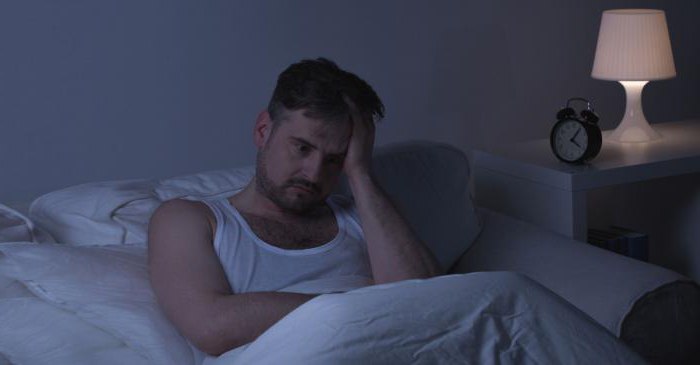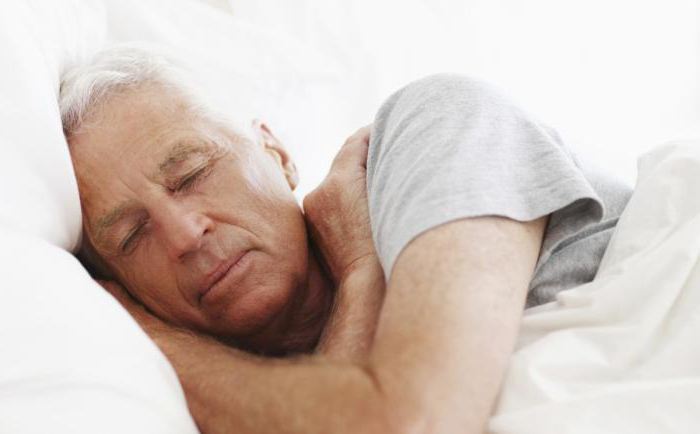Nocturia is urination at night, which can talk about negative processes in the body. The condition is considered pathological if a person systematically gets into the toilet at night more than 2 times for a long time (days, weeks, etc.). It is a type of urination disorder and is more common in the male population.
History reference
The problem of nocturnal urination began to be actively studied in the late 90s. Domestic urologists have identified two medical terms - "nocturia" and "nocturia." The meaning of these words is different. Nocturia implies an empty bladder at bedtime. Because of this, there is a need to urinate at night. Nocturia is an increase in nocturnal diuresis in pathological processes in the body.
Physiology of Correct Urination
Normally, daily urine output implies the prevalence of daily diuresis (urine volume) over night. The ratio is 3: 1. During the day, a person consumes liquid, the volume of which should be equal to the amount of urine excreted.
When does night diuresis prevail?
In the afternoon, a person is in an upright position and the renal arteries are stretched, because they are part of the kidney support system. Nocturia is a compensatory mechanism for getting rid of excess fluid in the body. With various pathologies, the kidneys cannot adequately cope with urine excretion. Edematous syndrome develops . When a person occupies a horizontal position, the degree of tension of the renal artery falls and the kidney is better supplied with blood. The filtration rate increases and urine forms.
In what situations does nocturia occur?
Pathology can occur at any age. Here are some reasons:
- Congenital malformation of the genitourinary system. For example, a small bladder.
- Urinary tract pathology - nephrosclerosis (shriveled kidney), glomerulonephritis, chronic pyelonephritis, cystitis. In infectious and inflammatory processes, irritation of the receptors in the urinary tract and the urge to act urinate. When the kidney parenchyma shrinks, the vasculature expands and increases daytime and nighttime diuresis.
- Diabetes. An increase in blood glucose is accompanied by polyuria (increased release of a daily amount of urine) at any time of the day. Glucose is an osmotic diuretic, because it attracts a large amount of urine.
- Diabetes insipidus. It occurs with a deficiency of antidiuretic hormone (vasopressin). Diuresis occurs at any time, and the body cannot replenish water supplies. Dehydration develops.
- Prostate adenoma in men is a volumetric formation of the prostate gland that compresses the urethra and disrupts the outflow of urine. It affects the male population older than 50 years. A man experiences constant urination, which is also observed at night.
- Cardiovascular and renal failure. There is a chronic violation of the blood circulation of the kidneys and other organs. And nocturia is an unfavorable sign with these pathologies, especially against the background of oliguria (a small amount of urine) in the daytime. There is venous fluid congestion with the formation of subcutaneous edema. With the development of pathology, edema can spread in the cavities of the body (in the chest, in the abdominal cavity, in the skull).
- Cirrhosis of the liver. Arterial hypertension develops, and pressure in the renal arteries rises, which is accompanied by increased filtration and urination.
- Atrophy of the pelvic floor muscles . It is more common in women. There is a prolapse of the pelvic organs, a violation of their correct location. At night, gravity does not affect the pelvic floor and organs occupy a more favorable position. The urination process is improving. Pathology is associated with a lack of estrogens, which affect the tone of muscles and connective tissue structures.
- Overactive bladder. In the muscle layer, the number of nerve impulses increases and there is a need for urination. It is observed more often in individuals with neurological and mental disorders.
- Taking diuretics (diuretics).
- Age. Sclerosis of the vessels of the kidney occurs, the level of ADH decreases. Older people have a nightly urination. In childhood, nocturia is normally observed up to 2 years. Toddlers older than this age may urinate at night involuntarily (enuresis) or experience anxiety in their sleep. Often, nocturia in children is observed due to stressful situations.

Types of nocturia
- Physiological - observed when drinking fluid at bedtime. Tea, coffee and alcohol have a diuretic effect. It can occur during pregnancy, when the fetus compresses the structure of the kidneys and urinary tract during the day. At night, the pressure is eliminated and there is an increase in renal blood flow and urine filtration. Symptoms of nocturia disappear when the causative factor is eliminated.
- Pathological - develops during pathological processes in the body and is persistent. It requires appropriate treatment, without which the symptoms of nocturia will not disappear.
How is nocturia manifested?
The largest percentage of patients with nocturia complain that they do not get enough sleep because of night trips to the toilet. Symptoms of nocturia:
- Nocturnal urine prevails over daytime urine output.
- Restless sleep. A full bladder can cause disturbing dreams with an appropriate plot in search of a toilet. A man, knowing this, gets up at night.
- Reduced performance the next day.
- Drowsiness, irritability, apathy, depression.
Nocturia is a common symptom of serious illness.
Diagnosis of nocturia
You can identify the problem in the early stages of the development of pathology. Diagnostics is as follows:
- Collection of appropriate complaints from the patient (how many times he urinates during the day and at night).
- Clarification of the development of nocturia, what it is associated with (medication, fluid intake at bedtime).
- Determination of the type of nocturia. Patients should keep a urination diary for 5 days in order to understand if this is a pathology or not.
- Identification of the presence of chronic diseases of the kidneys, cardiovascular and other systems.
- General examination of the patient.
To confirm the pathology, laboratory and instrumental diagnostics are necessary:
- General analysis of urine with the identification of its specific gravity, signs of inflammation, bacteria. At night , urine density should normally be higher. With diabetes, sugar will be in the urine.
- Bacteriological culture of urine. To determine the flora that caused inflammation. Sensitivity to antibiotics is also revealed in order to choose a drug with a narrow spectrum of action.
- Sample Zimnitsky. Examine 8 servings of urine every 3 hours. The ratio of day and night diuresis is determined and the specific gravity of each portion is examined. Nocturia is characterized by a decrease in urine density and the prevalence of nocturnal diuresis. Thanks to this study, kidney failure, diabetes insipidus, and inflammatory kidney diseases can be suspected.
- Determination of the level of antidiuretic hormone (ADH). Its level is reduced with diabetes insipidus.
- Ultrasound of the bladder (allows you to determine the residual volume in the bladder), kidneys and abdominal organs.
- The study of men - conduct transrectal ultrasound and digital examination of the prostate through the rectum to detect adenoma. Symptoms and treatment of nocturia in men are determined by a urologist.
- What is nocturia in women? This is a decrease in estrogen levels (determined by laboratory tests). In this case, a decrease in the muscle tone of the bladder, weakening of the muscles of the pelvic floor. Urination disorders develop. Symptoms and treatment of nocturia in women are determined by a gynecologist.
Nocturia treatment
First of all, you need to identify the cause. Only a doctor can diagnose and treat nocturia.
General recommendations
They are aimed at eliminating the provoking factors of the development of nocturia. To reduce the discomfort from the disease, you need:
- Exclude the intake of fluids and products with a diuretic effect (watermelon, melon) 3 hours before bedtime. It is better to limit the water load on the body after 6 pm.
- Avoid hypothermia.
- Do not take diuretics at night. Typically, such drugs are taken in the morning along with antihypertensives.
- Empty the bladder at bedtime.
Etiotropic and pathogenetic treatment
- Taking antibiotics and herbal medicines (Kanefron, Uriflorin) for infectious and inflammatory diseases of the urinary system.
- Achieving diabetes compensation. Glucose is found in urine at a blood sugar level above 10 mmol / L. Endocrinologist consultation and treatment correction are required.
- Analogs of ADH in diabetes insipidus (replacement therapy).
- Prostate adenoma in men. Drug therapy is aimed at relaxing the smooth muscles of the neck of the bladder and prostate gland, as well as reducing the volume of the prostate. For this purpose, alpha-blockers and 5-alpha reductase inhibitors are used. The outflow of urine is getting better. Surgical treatment involves removal of the prostate.
- Cardiologists and nephrologists are involved in the treatment of cardiovascular and renal failure. They struggle with arterial hypertension and edema.
- Liver cirrhosis is treated by therapists or hepatologists. The goal is the fight against secondary hypertension.
- Symptoms and treatment of nocturia in women are determined by a gynecologist. Therapy is aimed at eliminating hormonal imbalances, at strengthening the muscles of the perineum with the help of special gymnastics.
- A hyperreactive bladder is treated with several groups of drugs. Use selective antispasmodics ("Driptan"), which act specifically on the muscle that contracts the bladder (detrusor). M-anticholinergics ("Spazmeks", "Detruzitol") reduce the contractile activity of the detrusor. Antidepressants ("Imipramine") also block m-cholinergic receptors, have a weak sedative effect. Applied with enuresis in children over 6 years old. Botulinum toxin (Botox, Dysport) is injected into the bladder at 30 points in its cavity, leading to relaxation of the muscular wall of the bladder.

Prevention of night urination
This type of pathology can be avoided if you take your health seriously and undergo a routine examination. Prevention measures include:
- The passage of preventive medical examinations in order to identify pathological abnormalities of health from the norm.
- Timely treatment of diseases that can cause nocturia.
- Observation by a specialized doctor who will help compensate for the course of a chronic disease (urologist, nephrologist, cardiologist, etc.).
- Proper nutrition for the prevention of atherosclerosis and cardiovascular disease. You need to eat more fiber, low-fat varieties of fish and meat, complex carbohydrates (cereals, pasta).
- Avoid hypothermia.
- Stress management. Urination disorders can be against the backdrop of psychoemotional problems.
- Regular exercise, which will help keep the pelvic floor muscles in good shape and perfectly heal the whole body.
Nocturia is not a harmless symptom; it is an indicator of a malfunction in the body. It is important to consult a doctor on time, who will prescribe the necessary types of diagnostics. The results of the study will allow you to timely prescribe treatment and get rid of the problem. Often, the body itself hints at various malfunctions in the body that should not be overlooked. It is necessary to monitor your condition.